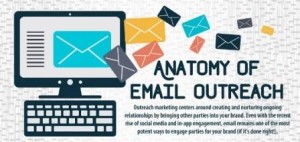It’s easy to see how social media marketing has become confused with community marketing over time. Social networks can be a great place to promote content, engage leads and build an audience, but these networks alone can’t accommodate authentic conversations with customers.
Some brands have tried to build customer communities on the backs of existing platforms like Facebook and Twitter. But as advertisers become increasingly limited in their organic reach on social networks, brands need to find new ways to engage and support customers.
Here’s why it’s important to think twice before you increase your social media spend to serve your community goals.
Social is no longer a direct line to customers.
Rather than getting lost in the noise of social media platforms, branded communities give you a direct line to your members. Research has shown that branded communities not only drive greater reach, but also add value at the other points of the user journey, like encouraging conversions and improving existing customer relationships.
On social platforms, brands are forced to pay to acquire users for their community, and then pay again to reach them over time. At the end of the day you’re renting the platform, you don’t own it.
Twitter has the same problem. And it’s compounded by the speed of Twitter’s stream. The average user follows 350 people, and as a result their feed moves very fast. It can be like drinking from a fire hose. If someone isn’t on Twitter at the moment you post, they won’t see it. Unless you pay.
Brands need a consistent pipeline for customer insights.
While social platforms are great for “energizing your base,” they’re not structured enough for ongoing insights.
Your customers aren’t likely to share their hopes, dreams or needs on your brand’s Facebook page. It’s not a place for rich conversation. They are more likely to do so with a group of like-minded people they trust. Especially if it means they’ll get instant replies to their comments and questions.
For many brands, there’s no better source of growth and innovation than a passionate brand community. New products, features and ways of marketing can be generated through a continuous flow of ideas from the community.
Limited brand affinity on social platforms.
Your customers aren’t just connected by common interests. In many cases, people are connected by brand affinity alone. When your most loyal customers are excited about representing your brand, it makes sense to bring engagement home to a fully-owned community. With branded communities, organizations aggregate users around an affinity relevant to their brand, and build off of the goodwill and brand preference it creates.
Social networks aren’t great for customer retention.
Community building is highly valuable for retaining an existing audience, who has already purchased your products or is likely to repeatedly engage with your brand.
By owning your brand community, you can easily drive people back to your community through email and push notifications–something that simply doesn’t happen on social platforms. Push notifications drive users back in and create habits. Email newsletters highlight top threads in community. Contests can be used to reward active users.
As community strategist Stacy Jackson points out, social media can be a gateway to your organization’s owned community.
“Let social media be the gateway or invitation into the private community. A private online home for customers can limit the ability of competitors from seizing upon a public customer service issue (when posed on social media) and leveraging it for their own benefit.”
For brands investing in a community strategy, building a community takes time and patience. Most organizations simply don’t invest in community marketing because it’s a time-consuming endeavor.
But when you do, communities give customers new ways to experience your brand. Plus, a dedicated community for your customers demonstrates that your company is dedicated to offering a great customer experience.
When you spend time nurturing your relationship with existing customers, you’re investing in the long-term success of your brand.
Digital & Social Articles on Business 2 Community(9)
Report Post




